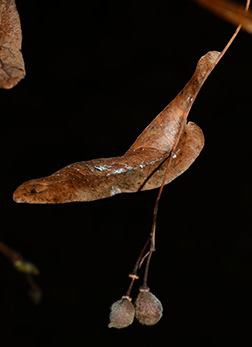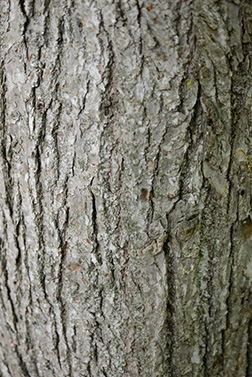littleleaf linden Tiliaceae Tilia cordata
Leaf:Alternate, simple, asymmetrical cordate, 1.5 to 3 inches long, with sharp, finely serrate margins, pinnately veined, asymetrical base, green above, paler below with light brown pubescence in vein axils.
Flower:Species is monoecious; pale yellow, borne below a long, gracefully curving leafy wing in a many (5 to 7) branched cluster, emerging in all directions from twig (not all hanging downward) several inches long, appearing in early to mid-summer.
Fruit:A round nutlet (1/5 inch) that is covered with gray-brown hair; generally smooth but may be slightly ribbed, occur in a hanging cluster of 2 or 3 with a curving, leafy bract acting as a wing on top of the cluster, ripening in the fall.
Twig:Slender, zigzag, green-brown or red-tinged (particularly in the winter); terminal bud is false (1/8 inch long), buds are plump with one side bulging conspicuously, green to red in winter, edible and when eaten they are mucilaginous.
Bark:Gray or brown, ridged with shallow furrows and flat ridges; young stems are brown with shallow splits and furrows. Inner bark is quite fibrous.
Form:A small to medium tree to 60 feet with a dense, round crown. In the U.S. it is typically only seen when open grown where initially it is pyramidal but generally becomes as wide as it is tall. Numerous burls and sprouts often found around the base of the tree.







Notes: